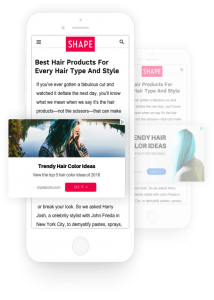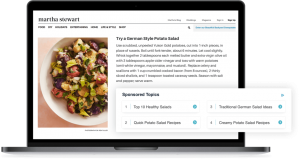 Editor’s note: Beverly Jackson is a finalist for 2018 Content Marketer of the Year. We’ll share insight from CMY finalists in the blog before the winner is announced at Content Marketing World in September.
Editor’s note: Beverly Jackson is a finalist for 2018 Content Marketer of the Year. We’ll share insight from CMY finalists in the blog before the winner is announced at Content Marketing World in September.
When was the last time you went to a casino? When was the last time you went to Las Vegas just for the gambling?
Though plenty of people do, a much larger set of people don’t put gambling or Las Vegas at the top of their what-to-do-for-fun lists.
How to gain recognition in a larger market – while keeping existing customers clamoring to return – posed a challenge for MGM Resorts International. With its flagship property, MGM Grand, associated so closely with Las Vegas, few people realize how many properties the company operates (in Las Vegas and around the world), let alone what MGM Resorts offers apart from a casino experience.
Shifting the market’s perception of the company from gaming is the goal of the digital, organizational, and cultural transformation the company is going through. Instead of simply gaming, MGM Resorts wants its 28 global properties to be known for something with a near universal appeal – entertainment.
Content stands center stage in this effort. But it isn’t just any content.
“You don’t say you’re going to compete with Disney and then put out content that looks like Firestone,” says Beverly Jackson, vice president of social strategy at MGM Resorts International.
Don’t say you compete with Disney and put out content that looks like Firestone, says @BevJack
Click To Tweet
Beverly’s work as head of the team that strategizes, conceives, creates, and distributes the social content promoting these experiences earned her a nomination for Content Marketer of the Year. And it offers several lessons for other marketers.
Help individual voices work within an ensemble
MGM Resorts International operates many well-known destination brands including Aria, Bellagio, MGM Grand, The Mirage, Circus Circus, and others in Las Vegas. Many of these properties have distinct brand characteristics and audience segments. Aria, for example, touts smart-technology experiences like tablet-controlled services, while Circus Circus focuses on family-friendly, theme-park-style experiences.
When Beverly joined the company in 2015, one of her challenges was to create a social strategy and presence for the parent brand, MGM Resorts International. Although people knew individual properties’ brands, the parent brand only mattered on Wall Street as investors evaluated the company’s overall inventory.
Beverly first brought together all of the brands’ social and content strategists and creators into one central department. Though they now work together, the teams preserve the tone and approach that make sense for each property.
Consider the difference in tone between this tweet from Circus Circus:
And this one from Aria:
Though the experience on display differs, the theme of entertainment unites them. In fact, the idea that entertainment is a human invention ties together the brand content.
And that emphasis on entertainment extends to properties far beyond the Strip. Social content counting down to the August 2018 opening of the MGM Springfield in Massachusetts, for example, highlighted the range of entertainment available.
Gaming gets a plug. But so do wining and dining.
… and even quietly reading.
The content ties the new property to many Vegas staples, but also shows what the property offers regardless of your interest in gambling. The Boston Globe took note, calling it “as un-Vegas as Springfield itself.”
Create a 360 experience
MGM Resorts owns 400 restaurants and nightclubs, and hosts thousands of events each year featuring some of the biggest names in entertainment: Bruno Mars, Cher, Rickie Martin, Lady Gaga, and Aerosmith. It also owns a WNBA basketball team (Las Vegas Aces) and Las Vegas T-Mobile Arena, which is the home of the NHL team the Golden Knights, Stanley Cup contenders in its inaugural year.
Much of the related content created and promoted by Beverly’s team rolls out on social channels (as in this example):
But the MGM Resorts team also looks at creating experiences that bring people along the customer journey. When Beverly talks “content,” she’s talking about content for social channels and marquees, in-room or mobile devices, and the company’s app.
“We have to be able to tell amazing stories in 60-, 45-, 30- and 15-second increments and on a 4-inch by 2-inch screen,” she says.
And the stories need to do more than just entertain. “Social and content are designed to hit people where they are and move them along the journey,” Beverly says. “Someone in the exploration phase (can) see beautiful pictures of suites and videos to get them excited about the trip. If someone’s in town, they may be looking for things to do. We’ll look to conquer their attention and get a larger share of voice.”
That’s why her team uses content to highlight experiences rather than focusing on hotel rooms. On MGM Resorts social channels, you’ll see plenty of content about specialty drinks at a cocktail lounge, poolside activities, and tips on booking spas at one of the properties.
This content comes from Beverly’s team of strategists and “makers,” who create and execute stories across every touchpoint at every experience. Most of the team can shoot and edit video plus create content and lay out the strategy for how it can be used across channels.
For example, Beverly charged the staffer who handles the WNBA team with creating a narrative through the content he captures. They’re working on an approach that models a 24-second shot clock, during which they take players through a series of rapid-fire questions during a long, continuous shot.
“We find this kind of approach is captivating because it stops viewers and they engage with it on social,” Beverly explains. “That person plans everything from how we shoot it, how we edit it, and what music we use. Our social team has final say in what content looks like because they’re engaging people with it online.”
HANDPICKED RELATED CONTENT:
Measure returns based on priorities
Content clearly plays a big role in the transformation the company’s undertaking. Of course, behind the scenes, numbers do count. There are tickets to be sold and rooms to fill.
To show how her team’s efforts contribute, Beverly reports on three sets of KPIs. Though she can’t share results publicly, she describes the expectations around each.
Brand awareness and preference, which leads to share of wallet and voice. This area is in transition because of the shift from gaming and hospitality brand to an entertainment brand.
Traffic to brand websites. Beverly’s team tracks where the traffic comes from on social channels as well as how social moves people through the MGM experience. Some site visitors explore their options before they get to their destination. Some are looking for things to do while they’re in town. Over the last two years, the company has experienced double-digit growth in website traffic referred from social channels.
The mobile app. The MGM app lets people book hotel rooms, make reservations for events, get tables at a night club, and reserve cabanas by the pool. They can bet on a game from the pool or the nightclub and get their winnings in a mobile wallet. “The app is a newly launched product, and I stepped in because they were going to launch it with a poster campaign,” Beverly says. “Social is a big channel to download the app now.”
Pick the right collaborators
Beverly’s team serves as an internal agency to the properties as a whole and partners with various external agencies and the visiting performers’ teams to find and create the right content.
.@MGMResortsIntl #content team serves as internal agency to all its properties, says @BevJack.
Click To Tweet
She’s adamant that when you build a social media team, you need to find people who can work closely together. And these people need to be a blend of creators, strategists, and community managers. “This is the combination of people who get the party started, help people have fun, and then make sure it keeps going,” she says.
To find out live who is named the 2018 Content Marketer of the Year (and lots of things to help your content marketing program), register today for Content Marketing World Sept. 4-7 in Cleveland, Ohio. Use code BLOG100 to save $100.
Cover image by Joseph Kalinowski/Content Marketing Institute
The post How Content Takes the Stage to Change Brand Perception [Example] appeared first on Content Marketing Institute.
from Content Marketing Institute https://ift.tt/2wtUpcf






 Editor’s note: Beverly Jackson is a finalist for 2018 Content Marketer of the Year. We’ll share insight from CMY finalists in the
Editor’s note: Beverly Jackson is a finalist for 2018 Content Marketer of the Year. We’ll share insight from CMY finalists in the 




 (@mhanes)
(@mhanes) 



 More people are making their voices heard when they need to search for something. They’re ditching their keyboards for the convenience of “OK, Google.”
More people are making their voices heard when they need to search for something. They’re ditching their keyboards for the convenience of “OK, Google.”


